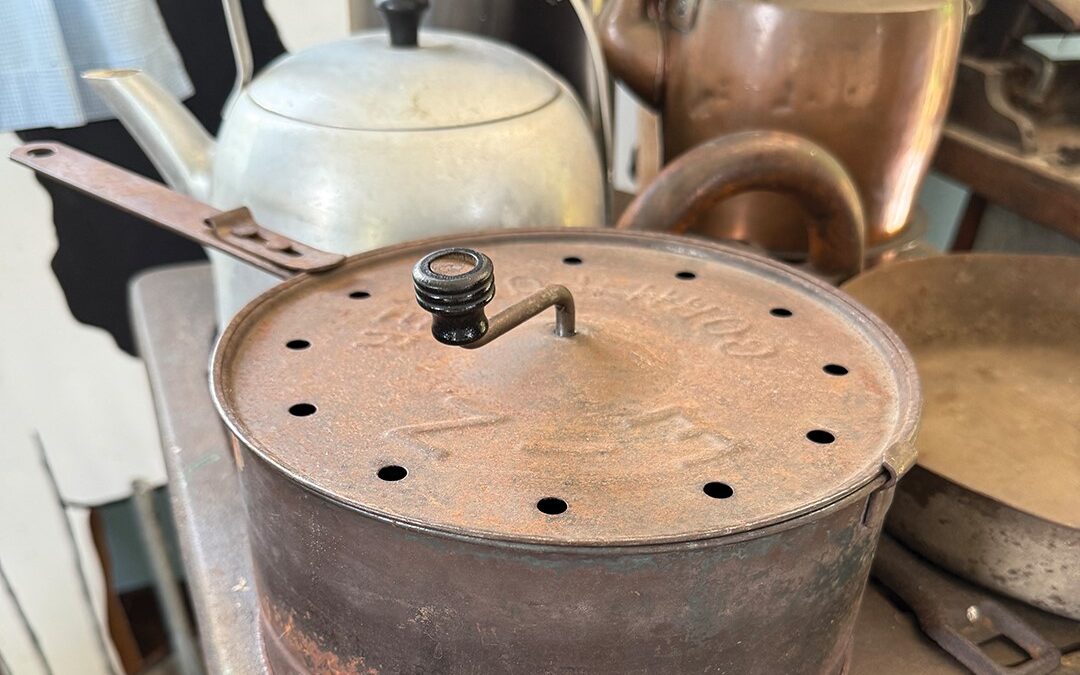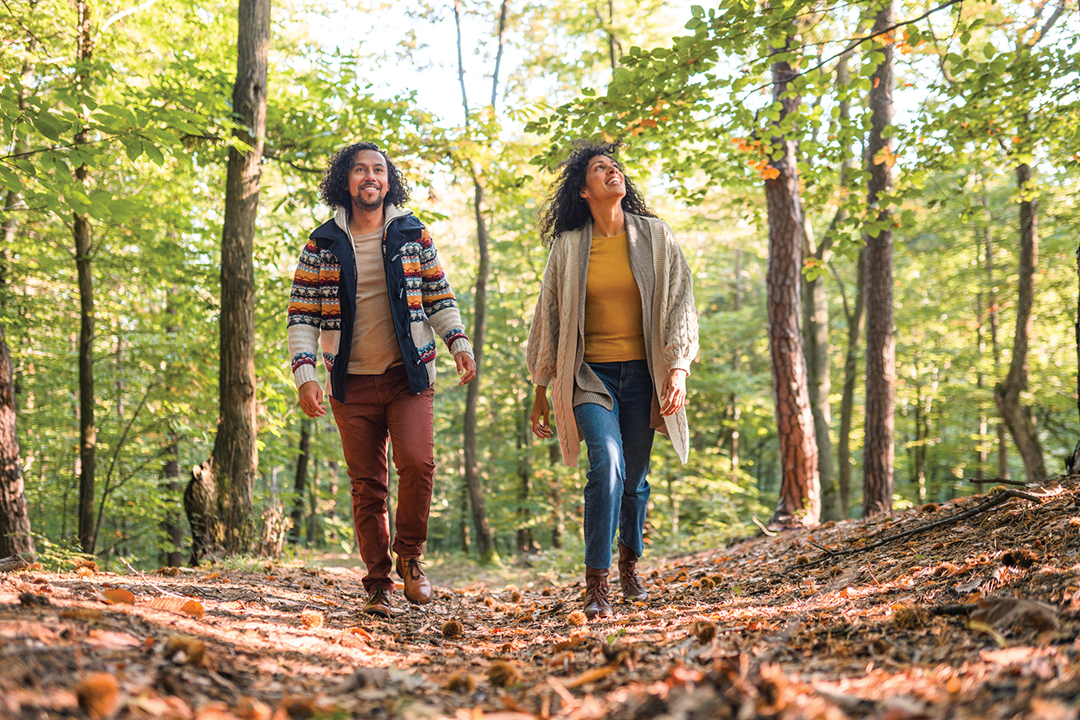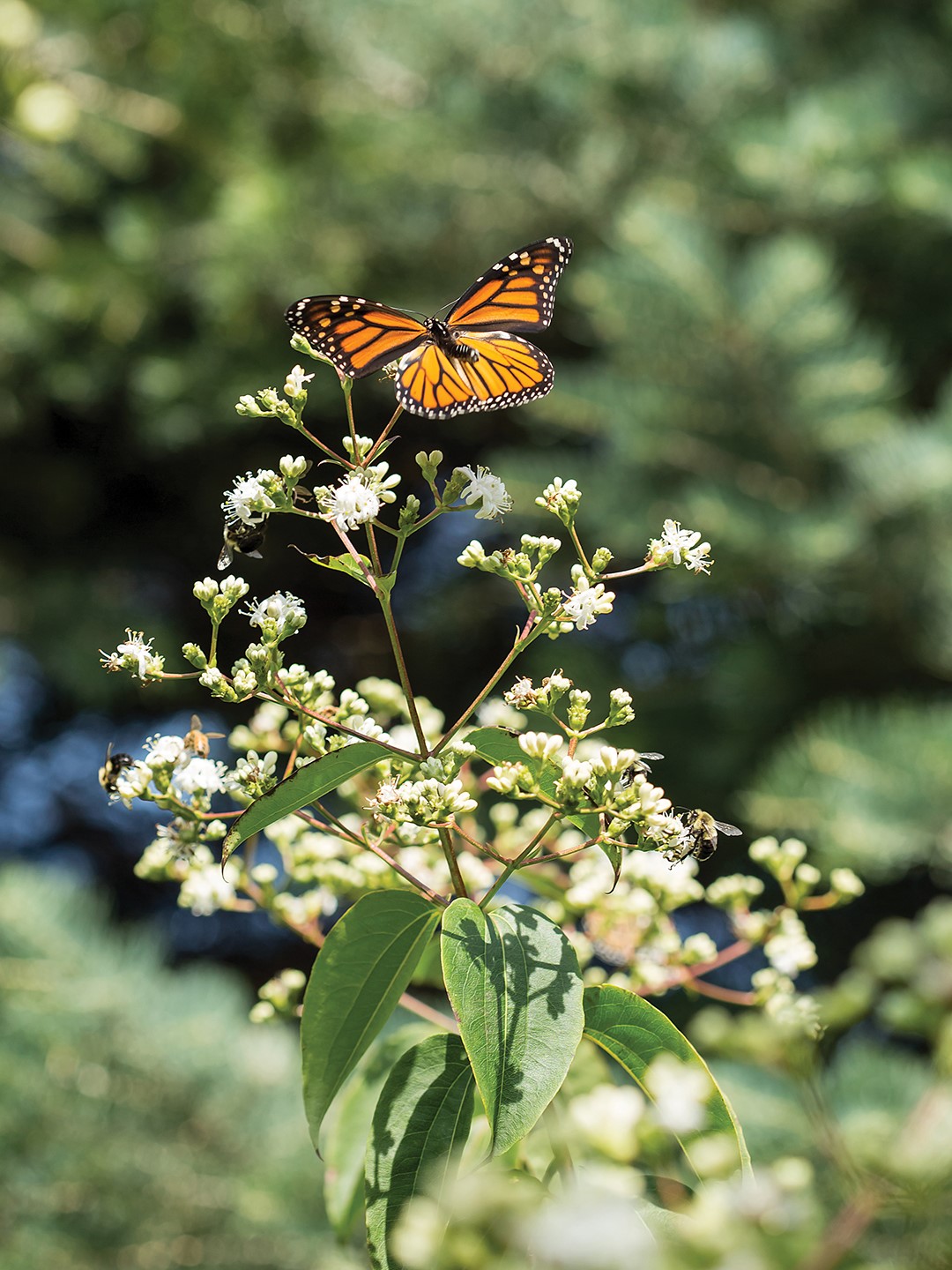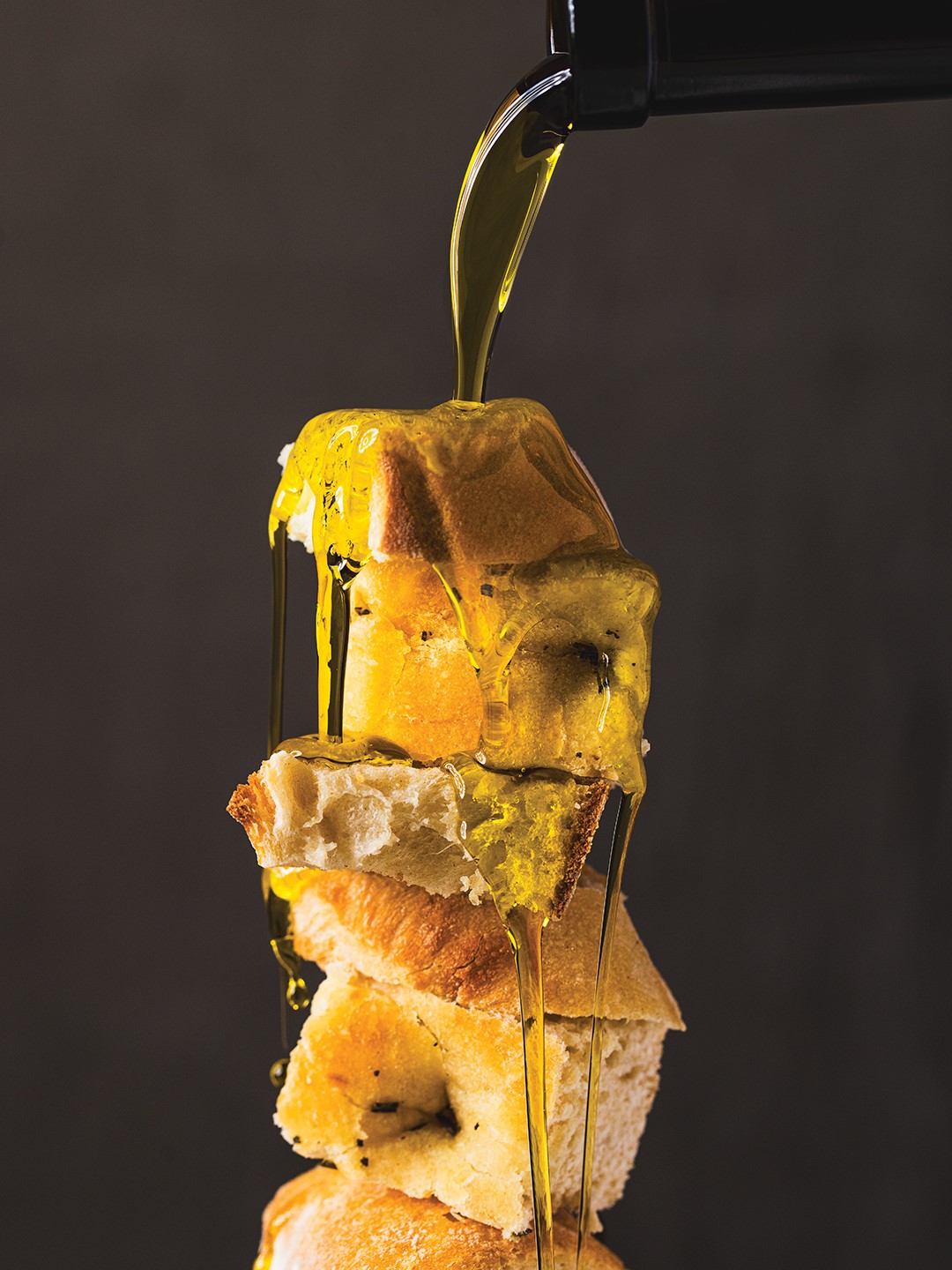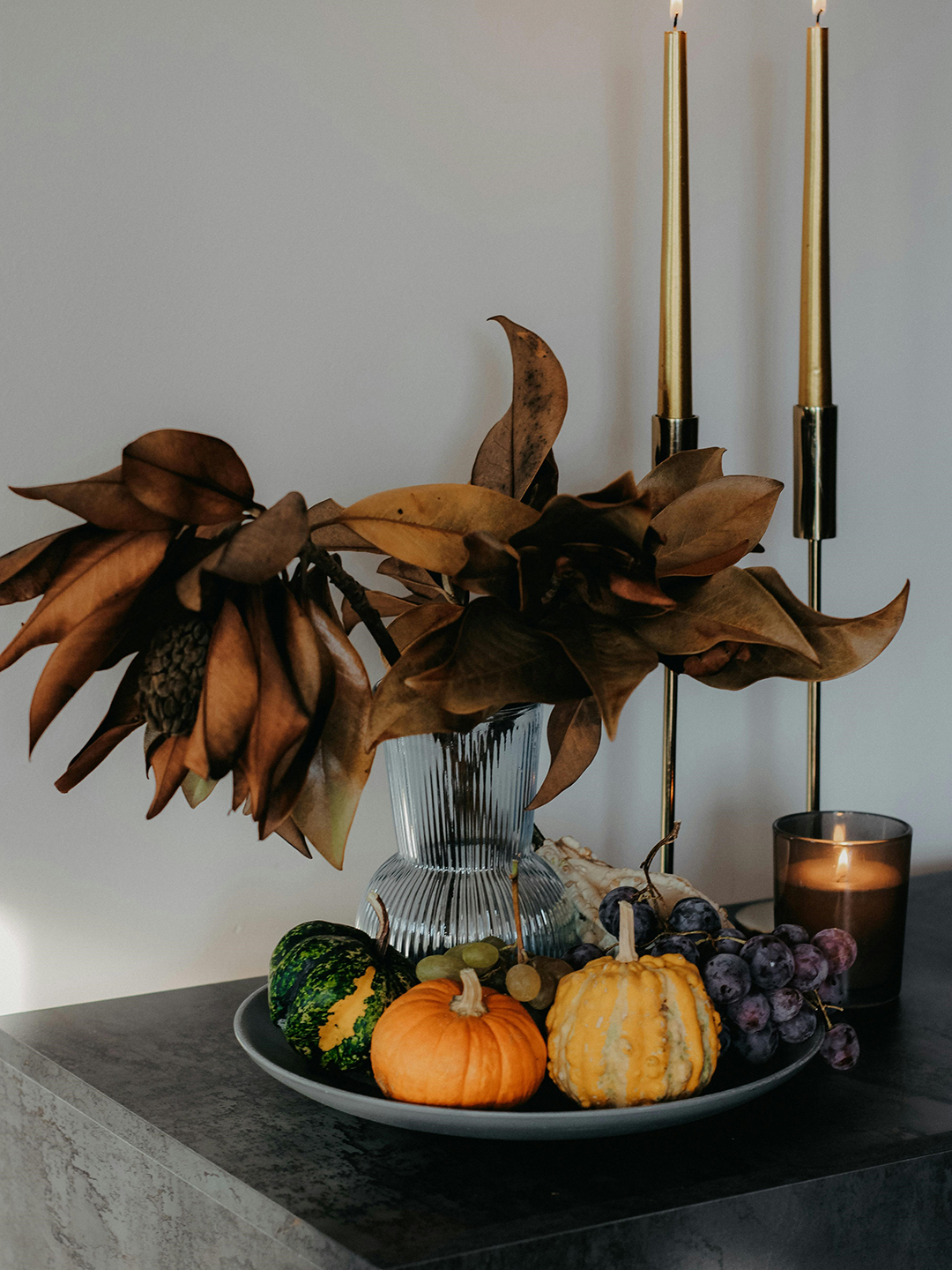
iStock/EvgeniiAnd
From the garden to the kitchen and out to the front porch, pumpkins usher in all the cozy fall feelings.
There’s nothing more iconic to the month of October than pumpkins. Beyond front porches adorned with flickering carved jack-o’-lanterns and tapering towers of pastel Cinderella pumpkins, there’s the annual trip to the pumpkin patch, the warming scent of pumpkin bread in the oven and simmering pumpkin sage soup on the stove top, fall festival seed-spitting contests and the beloved—and controversial!—pumpkin spice latte.
To learn the pumpkin basics, we turned to third-generation farmer Brian Schiltgen of Schiltgen Farms in Afton. He and his wife, Amy, are raising their children and fourth generation farmers, Maverick, Brock and Mabel, on the family farm started in 1950 by Schiltgen’s grandparents, Richard and the late Kathryn Schiltgen.
While Schiltgen’s uncle, Ron, runs the grain, corn and soybean operations, Schiltgen manages the vegetable side, growing more than 60 varieties of pumpkins, 10 varieties of squash, gourds, mums, straw and flint corn. Continuing and expanding Kathryn’s tradition of selling roadside pumpkins and fall decorations, the farm is open mid-July through October, with Grandma Jo’s (Amy’s grandmother) famous dill pickles selling out quickly.
Growing
More varied than an artist’s palette, pumpkins come in a wide range of colors, sizes, textures and stem formations. Plant according to your edible and ornamental needs.
- Plan your planting schedule based on the variety’s maturation days, anywhere from 75 to 125 days.
- Plant in full sunshine.
- Follow seed instructions for spacing between plants and rows, leaving room to stretch and grow. Vining habits span from full and short vine to more compact semi bush and full bush.
- Water from the ground, not overhead, to prevent powdery mildew, fungus and black leaf rot. Pumpkins are heat-tolerant without daily watering.
- The first flowers to grow are male. “Some people get discouraged because they see a bunch of flowers but don’t see pumpkins starting to form,” Schiltgen says. “Eventually, the pumpkin will produce female flowers with tiny bulbs that will produce pumpkins if pollinated successfully.”
- Harvest when the stem is no longer green and has a cork-like look and dark color. The shell should be rock hard.
Care and Storage
Not only do kids want to display their carved masterpieces through Halloween, we want our outdoor decorative pumpkins to greet passersby into November. We asked Schiltgen how to prolong the life of pumpkins—for aesthetic and culinary purposes.
Undamaged pumpkins can last up to three months if stored properly. “People will buy multiple bushels of squash [and pumpkins] for culinary purposes,” Schiltgen says. He’s even known people to use white pumpkins for Christmas decorating.
- Avoid freezing temperatures.
- Wipe them with water before storing.
- Store single layers in a dry, aerated area.
- For decorative and carving pumpkins, wash (including stems) with 10 parts water to one part bleach to kill off any fungus. Dry.
- Place on cardboard or wood board. “Concrete is usually colder than the ambient air temperature, and the pumpkin will get cold from the bottom and will typically rot from the bottom,” Schiltgen says.
- Keep stems intact to protect from rotting.
In the Kitchen
Pumpkins aren’t just for looks. They are a healthy, versatile and flavorful ingredient, making them popular in sweet and savory dishes from home bakers to five-star chefs.
For cooking (soups, pasta, roasted side dishes, gnocchi and gratin) and baking (cake, cookies, bread and pie), Schiltgen suggests a few pumpkin varieties for the best texture and flavor: cannonball, pick-a-pie, sugar pie and Long Island cheese, and Schiltgen’s favorite …
“Fairytale—an heirloom variety. It’s a squatty Cinderella shape with pronounced ribbing that matures into a brown buckskin color,” he says. “It’s hard to find, so culinary chefs come from around the Twin Cities for that pumpkin because they know I grow them.”
As pumpkins are packed with vitamin A, potassium, iron, beta carotene, alpha carotene and lutein, maybe a healthy dose of Thanksgiving pie is actually good for us.
We were surprised to learn that many culinary professionals prefer squash versus pumpkin because it is typically sweeter with a buttery smooth texture. Chefs come to Schiltgen for multiple varieties of butternut squash, including cream of the crop, New England cheddar, sunshine (a kabocha squash), buttercup and acorn.
Schiltgen says white pumpkins and standard jack-o’-lanterns are not conducive to baking.
Preserving
Freezing pumpkin flesh or puree is the safest and easiest method for preserving pumpkin. The U.S. Department of Agriculture does not recommend canning mashed or pureed pumpkin.
Pumpkin Seeds
Also known as pepitas, raw pumpkin seeds are low in carbohydrates, packed with magnesium, manganese, iron, zinc and copper, and are high in antioxidants and anti-inflammation alpha-linolenic acid. Enjoy the superfood as a crispy snack, toss on soups, salads and pancakes, add to granola and peanut butter cookie recipes, or combine with sugar and sprinkle on muffins before baking.
Roasted Pumpkin Seeds
Courtesy of Brian Schiltgen
Extract pumpkin seeds. Rinse with water using a colander. Dry on paper towels. Place seeds on a baking sheet. Generously toss with olive or avocado oil. Sprinkle a light dusting of Lawry’s seasoned salt on top. Toss to coat. (For variations, use garlic or onion salt, cinnamon and sugar, or black, cayenne or lemon pepper.) Bake at 350 degrees F for 12–15 minutes or until brown and crunchy, stirring every couple of minutes to ensure they are evenly roasted on both sides. Cool. Store in an airtight container.

Baked Pumpkin with Quinoa
Courtesy of Lunds & Byerlys
- 1 pie-sized pumpkin
- ½ lb. chorizo sausage, bulk
- ½ cup green onions, sliced
- 2 Tbsp. olive or avocado oil
- 1 package quick cook Spanish style quinoa, brown rice and red beans blend
- sea salt and ground black pepper
Heat oven to 375 degrees F. Cut the pumpkin in half, widthwise. Remove the seeds and stringy bits with a metal spoon. Line a sheet pan with parchment paper. Drizzle or brush the cut sides of the pumpkin with olive or avocado oil, season with sea salt and ground black pepper. Place the pumpkin, cut sides down, on the paper-lined sheet pan, and place in the oven to bake for 30 minutes. While the pumpkin is baking, cook the chorizo sausage in a saute pan or skillet over medium high heat until fully cooked and uniformly brown. Add sliced green onion, reserving a tablespoon to add as garnish when serving. Turn off the heat to the pan, and cover with a lid or foil to keep warm. Follow package directions to heat the quick cook Spanish style quinoa brown rice and red beans blend. Stir together with the chorizo and green onions. If after 30 minutes, the pumpkin is not fork-tender, turn them all cut side up on the sheet pan, and fill with the chorizo and rice mixture. Loosely cover with foil, and return them to the oven, cooking for up to 30 minutes more.
Treats for Fido
Pass the pumpkin to your beloved canines. The fiber-rich nutrients are beneficial for dogs, aiding in digestion, supporting eye health and contributing to a shinier coat. (Do not use canned pumpkin pie mix as it may contain xylitol, which is toxic to dogs.)
Pumpkin Peanut Butter Dog Treats
Recipe courtesy of randomsweets.com
- 1 cup pumpkin puree
- 2 large eggs
- 1/3 cup natural peanut butter (NO xylitol or sweetener substitutes)
- 2 cups whole wheat flour
- ½ teaspoon cinnamon
Combine pumpkin, eggs and peanut butter in large bowl. Stir until combined. Stir in flour and cinnamon.
Separate dough into two flat disks and wrap each in plastic wrap. Place in refrigerator for at least 30 minutes.
Heat oven to 350°F.
Unwrap dough and roll to one-quarter inch on a lightly (wheat) floured surface. Use cookie cutter to cut out shapes and place on baking sheet lined with parchment paper.
Bake 20–40 minutes (soft–crunchy). Cool on rack and store in airtight container.
Schiltgen Farms
Manning Ave. S. at 30th St. S., Afton; 651.503.5629
Facebook: Schiltgen Farms
Instagram: @schiltgenfarms
Twitter: @schiltgenfarms
Lunds & Byerlys
7050 Valley Creek Plaza; 651.999.1200
Facebook: Lunds & Byerlys
Instagram: @lundsandbyerlys
Twitter: @LundsandByerlys



